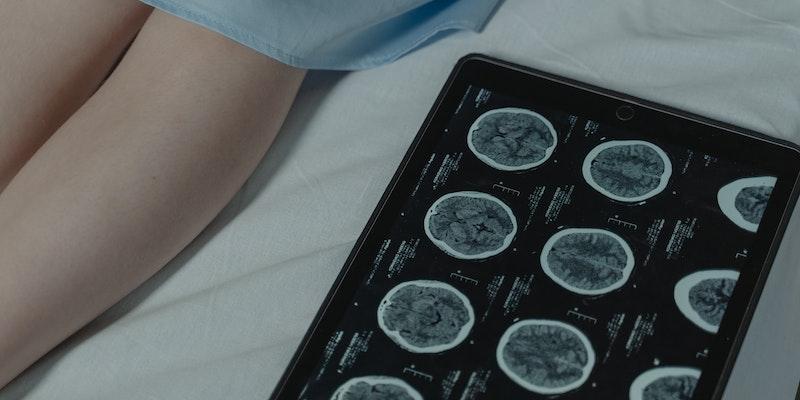Seizures Explained: What You Need to Know
Oct 01, 2023
Seizures disrupt brain chemistry and electrical activity. There may be temporary movement, awareness, behavior, and feeling changes. Because seizures can affect any brain region, their symptoms are varied. Brain cells that fire off regularly in certain areas are balanced on average. Due to electrical activity surges that cause cells to fire abnormally, seizures disrupt this balance. This abnormal brain function causes temporary uncontrollable brain activity that can cause various seizure symptoms.
Types of Seizures
Understanding the diverse types of seizures and how common is schizophrenia is fundamental for accurate diagnosis and effective treatment. Seizures are primarily categorized into two main types: focal and generalized, each presenting distinct symptoms and requiring specific management strategies.
- Focal Seizures: Originating in a specific area of the brain, focal seizures are further divided into two subcategories. Simple focal seizures do not impair consciousness, while complex focal seizures can alter awareness and responsiveness.
- Generalized Seizures: These seizures involve both hemispheres of the brain and cause loss of consciousness. They can be tonic-clonic, absence, or atonic. These seizures are usually worse and harder to control.
Triggers and Precipitating Factors
Identifying what causes seizures is instrumental in prevention and management. Triggers can include stress, sleep deprivation, and certain medications or substances. Recognizing individual triggers enables personalized management strategies, reducing the risk of seizure recurrence.
The Causes and Risk Factors
Seizures can be alarming and often raise the immediate question – what causes seizures? The root causes are varied, ranging from genetic predispositions to head injuries, and understanding them is critical to targeted treatment and management.
Genetics
A considerable proportion of individuals suffering from seizures have genetic factors to blame. With around 30-40% of cases having a hereditary link, pinpointing the exact genetic mutations is fundamental to comprehend the causes of seizures and tailor effective treatments.
Structural Discrepancies in the Brain
Structural anomalies such as tumors and vascular malformations disrupt regular neuronal activity, contributing significantly to what causes seizures. Utilizing advanced imaging technologies is integral to identifying these discrepancies and planning suitable interventions.
The Role of Metabolism
Metabolic imbalances, for instance, hypoglycemia and hyponatremia, can induce seizures by impacting neuronal functions. Addressing and managing these disorders promptly is essential in preventing seizure onset.
Impact of Infectious Diseases
Diseases like meningitis and encephalitis lead to inflammation in the brain, which significantly contributes to the causes of seizures. Swift identification and treatment of such infections are crucial in minimizing the risks associated with seizures.
Consequences of Head Trauma
Severe head injuries are known culprits in leading to the development of seizures. Implementing preventive strategies, timely medical interventions, and adequate rehabilitation are paramount for those suffering from trauma-related seizures.
Medication and Substance-Induced
Certain medications and substances can induce alterations in brain activity, increasing the risk of seizures. Regular monitoring, adjustment of medication doses, and awareness of potential interactions can mitigate this risk, ensuring that the use of seizure medications doesn't inadvertently contribute to the problem.
Symptoms of Seizures

Clinical presentation of seizures is diverse and dependent on the type and region of the brain affected. Recognizing the varied symptoms is critical for timely intervention and accurate diagnosis.
Focal Seizures
Focal seizures can present with various symptoms depending on the brain area involved. These may include:
- Altered Sensations: Individuals may experience unusual sensations, such as tingling or crawling feelings on the skin.
- Autonomic Symptoms: Symptoms like changes in heart rate, flushing, and sweating may occur.
- Motor Symptoms: Involuntary jerking of limbs or rhythmic muscle contractions can be observed.
- Psychic Symptoms: Déjà vu, fear, or other emotional changes can be experienced.
Generalized Seizures
Generalized seizures often result in a loss of consciousness and can manifest with several characteristic symptoms, including:
- Tonic-Clonic Movements: Characterized by muscle stiffness (tonic phase) followed by jerking movements (clonic phase).
- Absence Seizures: Typically observed in children, these seizures are characterized by brief episodes of staring and subtle body movement.
- Atonic Seizures: These result in a sudden loss of muscle tone, leading to falls.
Diagnostic Considerations
A meticulous approach to diagnosis is crucial, employing tools such as medical history, neurological examination, Electroencephalogram (EEG), and imaging studies. Identifying the correct type of seizure and underlying cause facilitates the formulation of an effective treatment plan, incorporating seizure medications as necessary.
Medication Considerations
When it comes to managing seizures, selecting appropriate seizure medications is essential. Considering the causes of seizures, individual patient profiles, and potential side effects are pivotal in optimizing treatment outcomes.
Managing and Treating Seizures
Lifestyle changes, medication management, and surgery are needed to treat seizures. The goal is to control, stop, or reduce seizures while minimizing side effects to improve quality of life.
Lifestyle Modifications
One of the primary steps in managing seizures involves making several lifestyle changes. These adjustments are crucial in controlling what causes seizures and include:
- Stress Managemen
- Regular Sleep Patterns
- Balanced Diet
Medication Management
Medication serves as the frontline defense in seizure control. Adherence to the prescribed medication regimen is paramount for optimal outcomes.
- Antiepileptic Drugs (AEDs): The primary treatment for seizures. They reduce seizure risk by altering brain electrical activity.
- Drug Monitoring: Regular monitoring of drug levels, effectiveness, and side effects ensures that the medication controls seizures effectively.
Surgical Interventions
Surgical interventions can be considered for individuals whose seizures are refractory to medication. The surgery's nature depends on the seizures' underlying cause and location.
- Respective Surgery: This involves removing the brain area where seizures originate.
- Neuromodulation: Techniques such as Vagus Nerve Stimulation (VNS) or Responsive Neurostimulation (RNS) can help control seizures by altering nerve activity.
Seizure Impacts on Employment and Social Life

While seizures pose challenges, many individuals lead successful careers and maintain fulfilling social lives. Supportive employers, colleagues, friends, and family play a significant role in this achievement.
Advancements in research and technology continue to unveil new treatment options and enhance our comprehension of what causes seizures. Such developments promise improved seizure control and quality of life for individuals with this neurological condition. Continued adherence to seizure medications and regular medical follow-ups remain central to successful long-term management.





